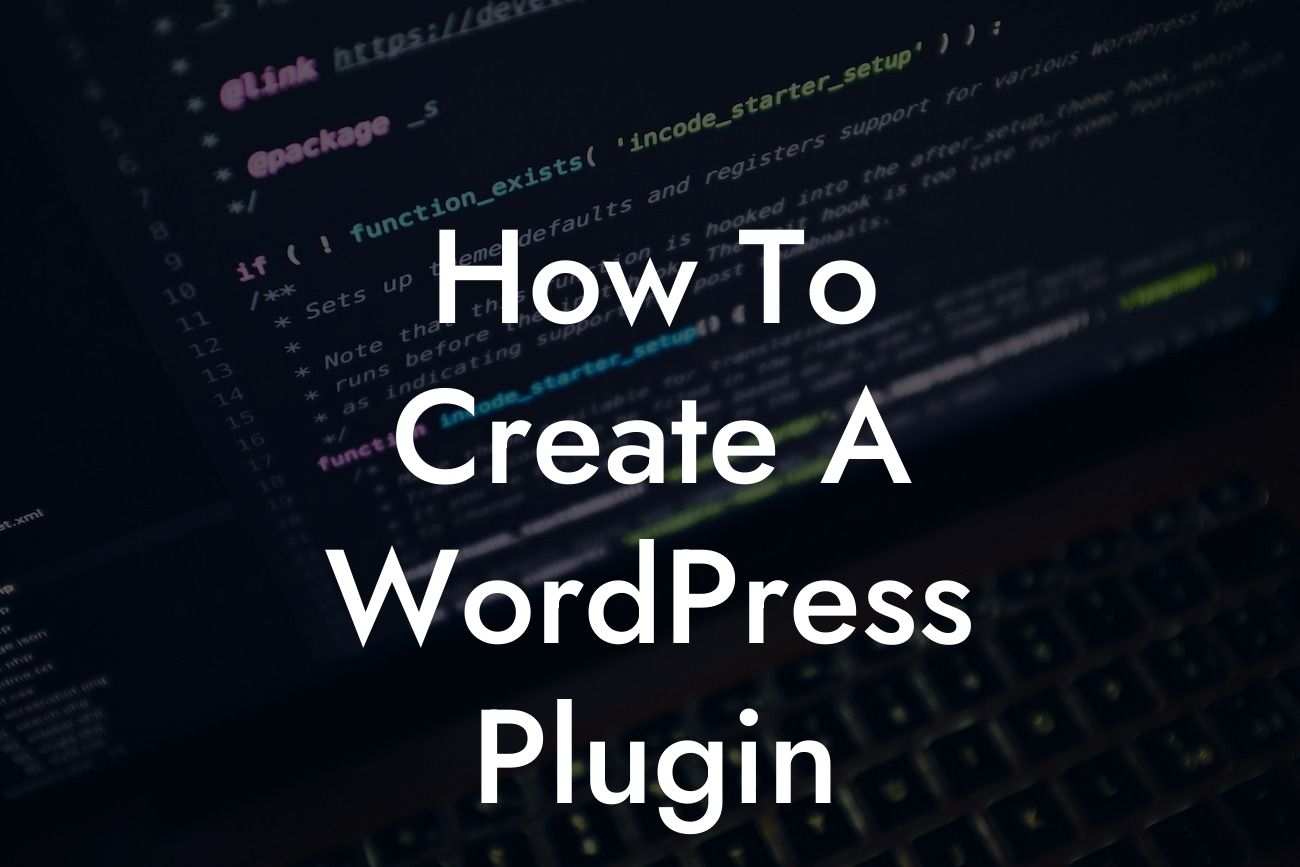Creating a WordPress plugin may seem like a daunting task, especially if you don't have any coding experience. However, with the right guidance and a pinch of creativity, you can develop your own powerful plugin that enhances your website's functionality and meets your unique business needs. In this comprehensive guide, we will take you through the step-by-step process of creating a WordPress plugin, from concept to implementation. So let's dive in and unlock the potential of WordPress development!
Creating a WordPress plugin requires careful planning and execution. Here are the key steps to follow:
1. Identify Your Plugin's Purpose: Start by brainstorming the functionality you want to add to your website. Whether it's a contact form, a booking system, or a social media integration, clearly define the purpose of your plugin.
2. Plan Your Plugin's Structure: Determine the different elements your plugin will consist of, such as custom post types, shortcodes, or widgets. Organize these elements in a logical structure to ensure smooth integration with WordPress.
3. Set Up Your Development Environment: Install a local development environment like XAMPP or use a code editor with a live server. This allows you to test and debug your plugin locally without affecting your live website.
Looking For a Custom QuickBook Integration?
4. Create the Plugin Folder and Files: Start by creating a new folder for your plugin in the WordPress plugins directory. Inside this folder, create the main plugin file (usually named after your plugin) with the .php extension.
5. Code Your Plugin: Begin coding your plugin by adding the necessary header information in the main file. This includes the plugin name, author, version, and description. Then, define the plugin's functions and hooks using the WordPress Plugin API.
6. Implement Plugin Functionality: Add functionality using WordPress hooks and functions. For instance, if you want to add a contact form, use a hook to display the form on a specific page or post.
7. Test and Debug: Regularly test your plugin as you develop, ensuring it works seamlessly with your WordPress site. Use debugging tools or enable debug mode to identify and fix any errors or issues.
8. Document Your Plugin: Documenting your plugin is crucial for future maintenance and updates. Include detailed instructions, plugin compatibility information, and any necessary settings.
How To Create A Wordpress Plugin Example:
Let's say you want to create a plugin for displaying your latest Instagram posts on your website. First, identify the purpose and functionality of the plugin. Then, plan the plugin's structure by deciding where the Instagram feed will be displayed (widget, shortcode, etc.).
Next, set up your development environment and create the necessary plugin files. Code your plugin by integrating the Instagram API and using hooks to display the feed in the desired location. Test and debug your plugin, ensuring it fetches and displays the Instagram posts correctly.
Congratulations! You've just learned how to create a WordPress plugin from scratch. By harnessing the power of WordPress development, you can enhance your website's functionality in unique and exciting ways. At DamnWoo, we specialize in crafting WordPress plugins for small businesses and entrepreneurs like you. Explore our range of awesome plugins and elevate your online presence today. Don't forget to share this article with others and continue your journey towards WordPress plugin mastery!













